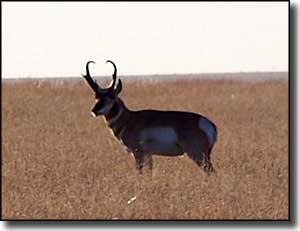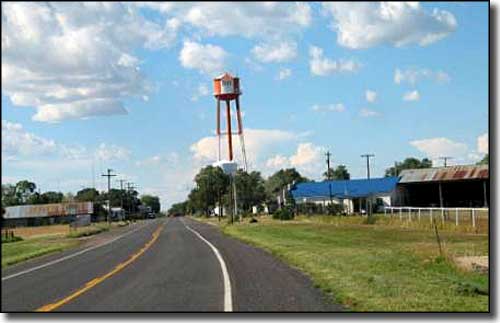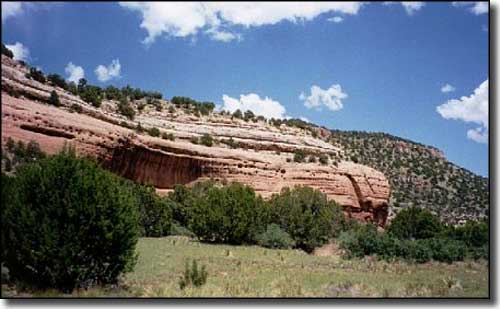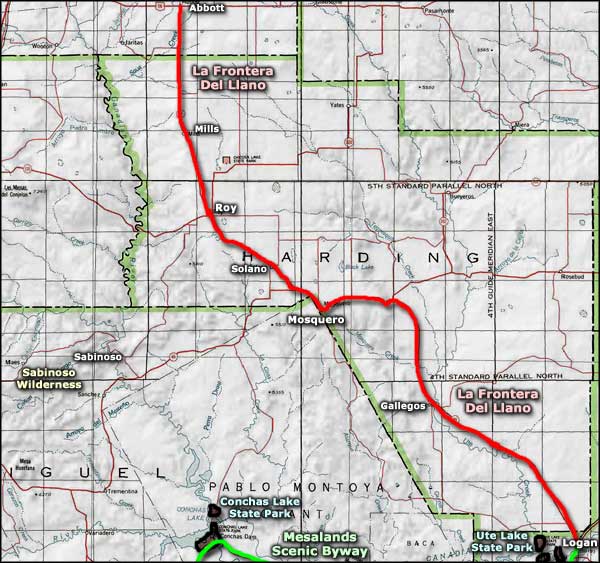

La Frontera del Llano Scenic Byway is a 94-mile route across the meetingplace between the Great Plains and the Rocky Mountains in northeastern New Mexico. This is an area where, except for paved highways and electric lines, things haven't changed since the days of the Santa Fe Trail. A lot of this route is across Kiowa National Grasslands, an area where you'll find a few good camping spots and some excellent fishing and hiking. This is large empty countryside and there are few services of any sort outside the couple small towns along the route.
The Homestead Act of 1862 brought thousands of people to this region but it's never been more than barely marginal farmland. The climate is semi-arid and the official recommendation says: one cow/calf unit per 40 acres. Which means it isn't the greatest of grazing land either. That said, there are cattle ranches and they are huge. There are also plenty of mule deer and pronghorn antelope along the way.
The big town along La Frontera del Llano Scenic Byway is Roy. Roy began life as a whistle stop on the railroad line that connected Tucumcari with Dawson. Roy was the central shipping point for cream, eggs and farmers' crops until the Dust Bowl took out most of that business. Roy also sits on top of the Bravo Dome carbon dioxide bubble deep in the Earth. Back in those days, the bubble was used to make dry ice for shipping vegetables and such. These days, Roy still offers many historic buildings from the turn of the 20th century, when local economics were much better.
Near Mosquero was the route of the famous Googdnight-Loving cattle trail, used to drive cattle from Texas up to the railheads in Kansas. Also outside Mosquero is Mosquero Canyon with its "Dinosaur Freeway": a tracksite that runs along the edge of an ancient inland sea.
La Frontera del Llano ends in Logan, near Ute State Park. Ute Lake is a reservoir up to 12 miles long that provides for some excellent bass, catfish and crappie fishing. Campers and fishermen alike usually stay at Ute Lake State Park and try to pull out yet another of the state-record trophy fish that are known to live there.



